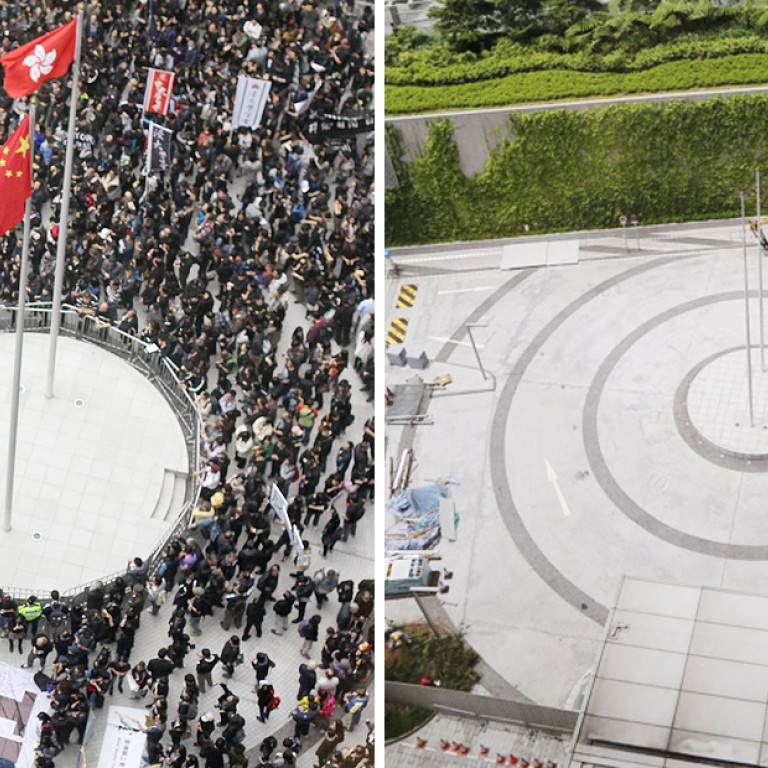
Update | Popular protest spot Civic Square closed for security works, public access limited
Access to 'Civic Square' forecourt to be blocked at night as security measure, but campaigners complain it is a blow to freedom of assembly
A three-metre-high fence is being built outside the government's headquarters amid security fears after several mass protests.
Critics attacked the measure, saying it undermined the right to freedom of assembly. The fence will block what used to be free access to the forecourt, or "Civic Square" as protesters call it, in front of the east-wing entrance to the Tamar site in Admiralty.


When work is completed, a rule will be introduced denying unauthorised people access to the square between 11pm and 6am. Fences will also be built to separate the forecourt from the Legco complex. Anti-collision barriers will be erected in other locations.
But mass protests will be allowed in the square on public holidays and Sundays with prior consent from the director of the Administration Wing.
Officials said the fencing was necessary in light of recent protests outside the Legco complex against plans to build two new towns in the New Territories.
On one occasion protesters used bamboo poles to try to pry open the doors to the complex.
"A review of the existing security arrangements revealed it is necessary to enhance the overall capacity to withstand potential security threats to the building," a government spokesman said. Because of construction work, the forecourt area will be completely sealed off to the public throughout next month - when the Occupy Central protest is expected to kick off.
The escalator leading to the east wing from the nearby elevated walkway has also been closed temporarily, pending work to beef up security.
The 1,000-square-metre forecourt has been a focal point for protesters since the complex, designed with a "door always open" theme, was relocated from Government Hill in 2011.
Large protests or sit-ins held there included the movement against the national education curriculum and a campaign urging the government to give a broadcasting licence to HKTV.
Lawmaker Andrew Leung Kwan-yuen said the government had not informed Legco of the plan. "As a matter of courtesy, it would have been better if we were notified beforehand," said Leung on Friday.
He said it was difficult to strike a balance between security and open governance, and argued the government should explain its rationale better.
A team from the police tactical unit was deployed to the office yesterday to prevent any potential conflict after the government issued news of the fence.
The decision comes at a time of dwindling public satisfaction with the government. The University of Hong Kong public sentiment index fell 8.1 per cent to 65.9, which it described as one of the worst in 20 years.
Tam Yiu-chung, chairman of the pro-Beijing Democratic Alliance for the Betterment and Progress of Hong Kong, said it was understandable for the government to take precautions.
But Dr Chan Kin-man, an organiser of the Occupy Central movement, said they never intended to occupy the area. "We believe it is useless to occupy the Civic Square as the administration has become numb towards the protests there," he said.
"The government is only trying to find an excuse to kill the protest zone."
Oscar Lai Man-lok, spokesman of the student-led group Scholarism, warned: "Higher and harder fences will not block public opinion."
Alex Chow Yong-kang, secretary general of the Federation of Students, said the move would prompt people to organise rallies at Chater Road in Central or other locations.
"We would make protests happen everywhere. The government can never stop us," he said.
James To Kun-sun, a Democratic Party lawmaker, said closing the square to the public at night amounted to "tightening the public's freedom of peaceful demonstration and assembly".
He added: "If the officials only want protesters to stay away from its office, it just shows how weak and afraid the government is."

